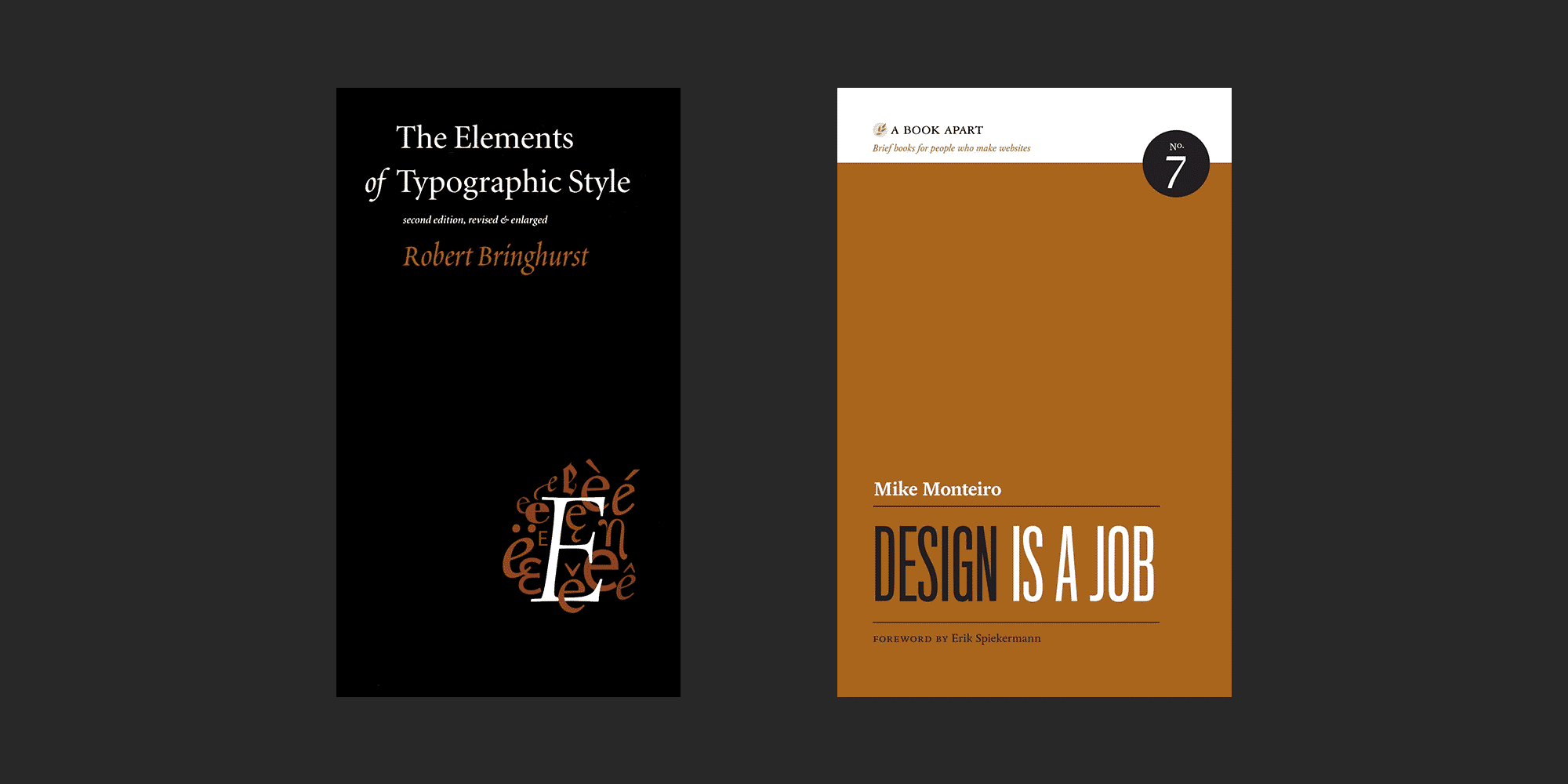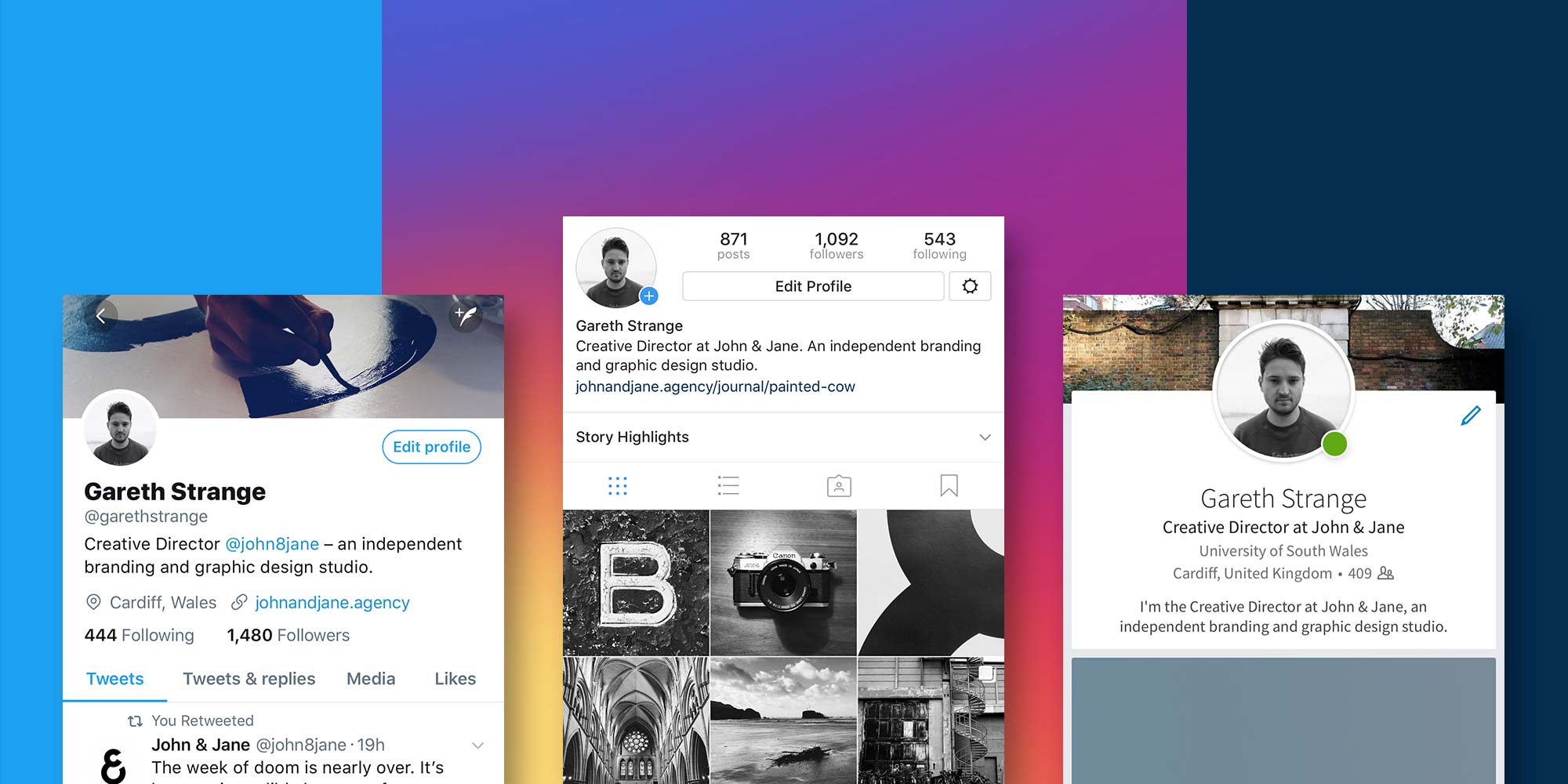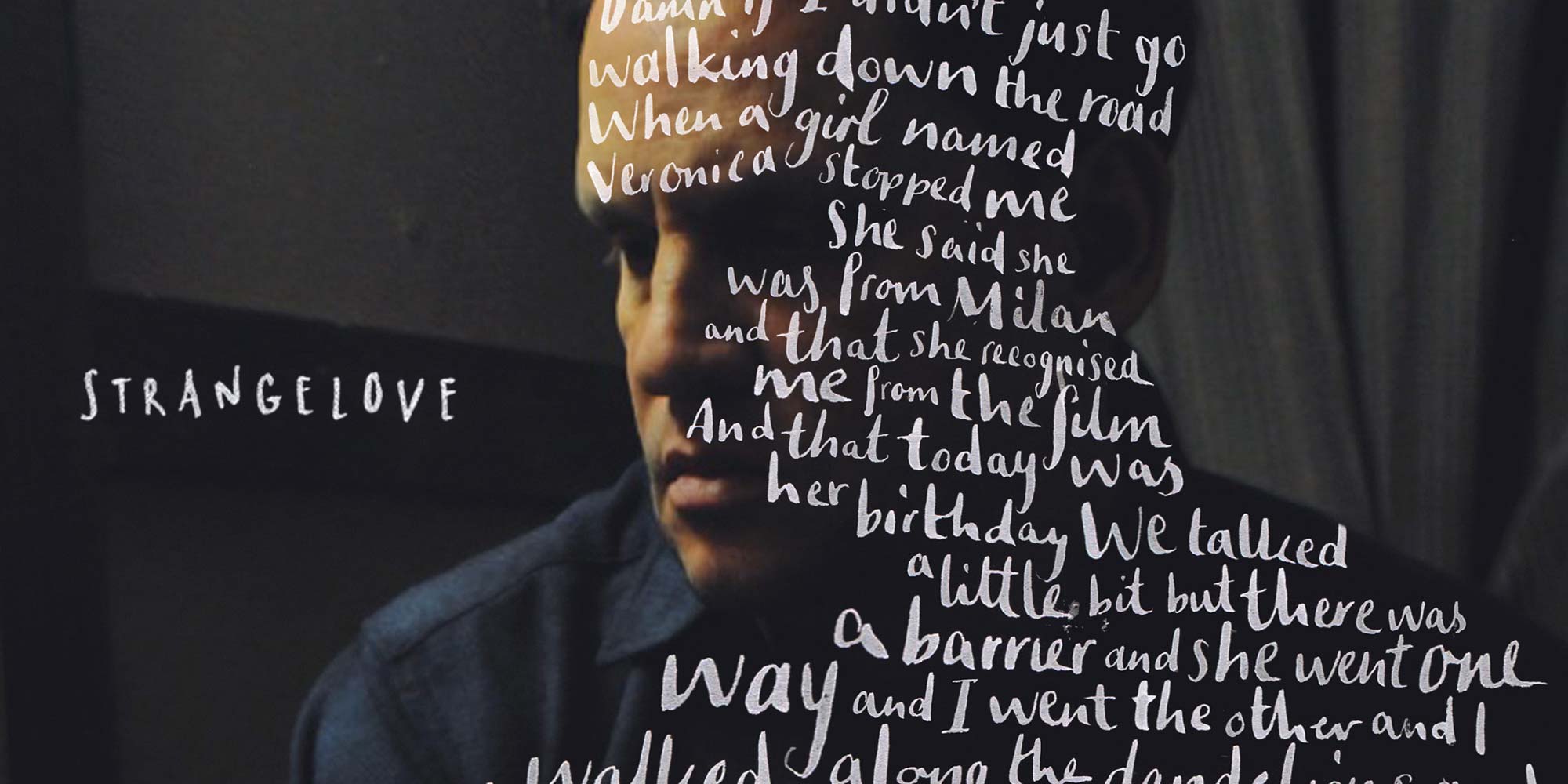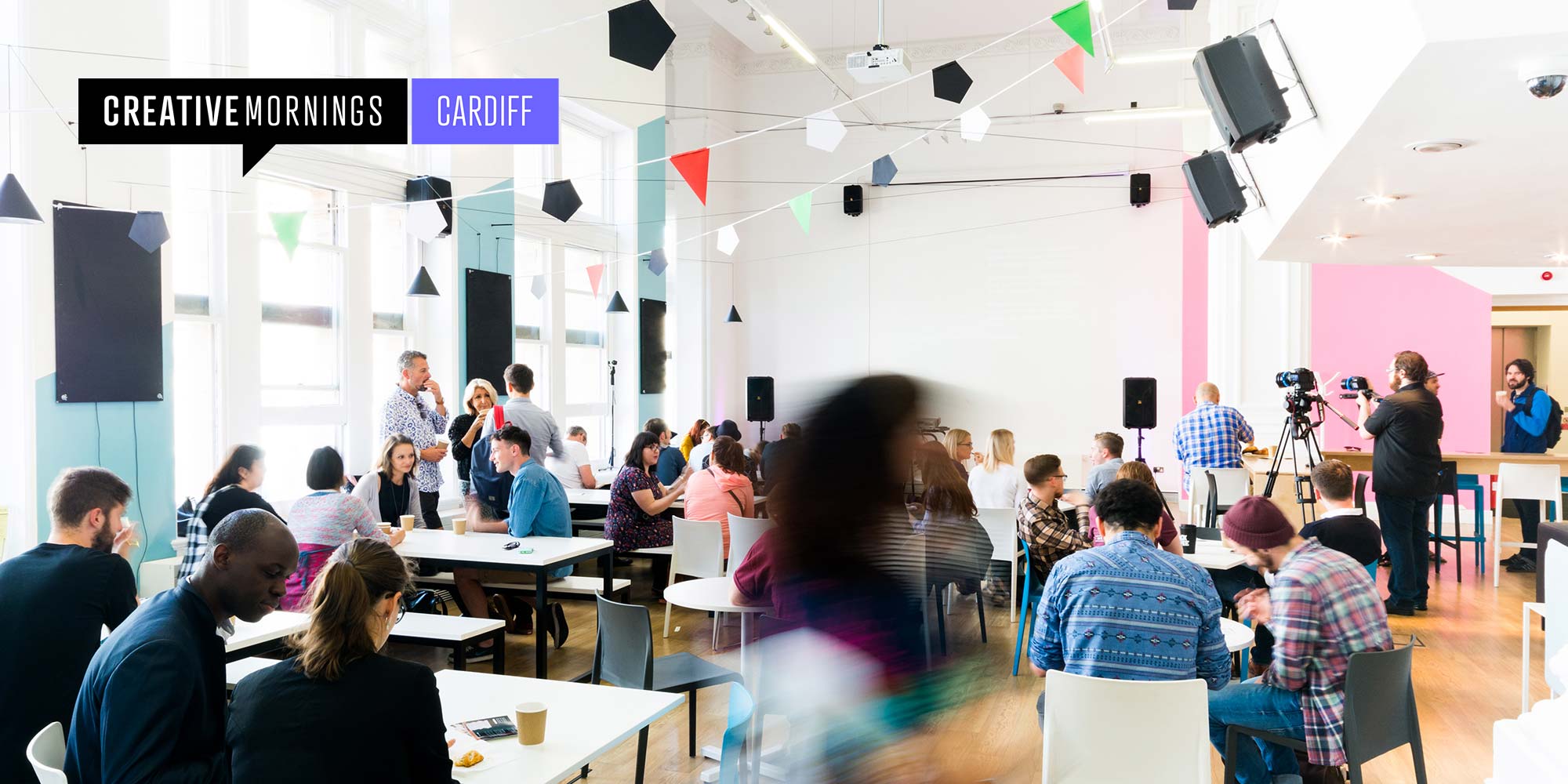9 nuggets of advice for design students and graduates

A year ago, David Wrenne invited me to go into the Cardiff School of Art and Design to speak at their Afterlife event—I happily accepted his offer and talked to students about my experience in the creative industry and the challenges of setting up my own design studio. It's fair to say in the last twelve months of running John&Jane, I have gained heaps more experience and learned lots of new lessons.
This year, we were invited back again and it was exciting to go in with the John&Jane team; myself, Sarah and newly graduated Callum. It was great to see the enthusiastic students show up in their numbers and ask some brilliant questions. I thought it would be useful to follow the talk up with some advice for design students and graduates.
The truth is, as designers we never stop learning or looking for inspiration. Hopefully by sharing some advice based on my experiences over the last ten years, it will be helpful for young designers who are just kicking off their professional career.

1. Read these books
There are many books that have helped me become a better designer, but there are two books that stick out when I'm put on the spot. The first is The Elements of Typographic Style by Robert Bringhurst—this book is often thought of as the holy bible of typography. It was originally publish in 1992 by Hartley & Marks Publishers, and has been revised several times since. It's the kind of book I would recommend writing notes in, so you can reference things in the future. It taught me so much about the history of typography and guided me to make better type decisions across all aspects of design.
The second book is by Mike Monteiro, and if you follow him on Twitter you'll know he's a strong character. If you don't follow him on Twitter, you definitely should. In Design is a Job, Monteiro has put together a practical guide on how to do your job better. Talking honestly about the mistakes he's made and how he's learnt from them. He instantly crushes the myth of the magical creative and reinforces that design is a process, he also gives solid advice on talking about money, protecting yourself and selling/presenting your own work.
These books have been invaluable to me, so I recommend you go out and buy them. Fast.

2. Think of yourself as a brand
What you post on the internet potentially stays on the internet. We all know student nights can get messy—we've all had one too many beers, but posting this stuff online will do you no favours in finding work or experience in the creative industry. Photos of you slumped on a bench trying to eat a burger is not a good way for you or your brand to be perceived. Always be conscious of what you're posting and why you're posting it. It's probably worth going back and having a clean out before you go applying for jobs.
If your social media bio says you're a designer, you are selling your services. Potential clients are likely to stumble upon your account, and they will immediately start judging your skills, style and level of experience based on what they can see. Your avatar, your cover photo, the way your bio is written all start to paint a picture of who you are and what you can do. Hopefully it is good enough for that person to want to learn more and click the link in your bio. There is a link in your bio, right?

3. Get yourself a professional website
In 2018, there are no excuses for graphic designers (even students) not to have some sort of website. You're a designer, it's likely you or a friend will be able to build websites. Failing that, there are web development platforms like Squarespace and Wix that allow you to create a great looking website in no time at all for a very small cost. Places like Behance are good places for your work to be discovered, but for me, there's no replacement for having your own website. Present yourself as a professional and you're more likely to get hired.

4. Decide where you want to work and go for it
There is a lot of pressure on graduates to get a job—you've just trained for three years and spent a lot of money in the process. I have seen students frantically send CVs to every design studio under the sun in the hope of getting a reply or even an interview. Stop.
Do your research and figure out where you would like to work and why. Is it the kind of work a particular studio does? Their culture? Because they're based in your favourite city? All of these are important things to consider. My advice would be to find 3-5 employers you would love to work with and spend time crafting a well considered, tailor made application, just for them. I mean this is your only opportunity to make a first impression, knock their socks off! Find out who you should send the application to and address it to them. Just make sure you spell their name right.

5. Make time for side projects and share them
Side projects are great. Whilst working at other agencies, I always had side projects on and I shared them under the name; Strangelove. As young designers, you are likely to be asked at some point to work for free. You'll hear things like, it'll look great in your portfolio or we can pay you when we're a bit more established. In my opinion, you should never work for free—if you do, your work will not be valued. If you are going to work for free, work on something you are passionate about, for yourself. This is a great way to experiment and develop your skills—you will work out what works and what doesn't. You will become a stronger and a more diverse designer and, if you share it, people will see the kind of things you're capable of. Chances are, you'll get hired to do things you already love doing.

6. Don't be a dickhead
As the famous Anthony Burrill quote goes "Work hard and be nice to people". We've all heard it a million times and for a very good reason. You can have all the talent in the world but if you're arrogant or unpleasant to work with, you could dramatically damage your chances of having a great career in the creative industry.

7. Get involved in the creative community
There are some brilliant creative events to attend. There's a CreativeMornings in just about every city these days, Cardiff included. Melin is doing a great job of running the Cardiff chapter since Sarah handed it over last year. Dan Spain has some brilliant events planned at Rabble Studio and design lecturer David Wrenne does an outstanding job of bringing in some great speakers into the Cardiff School of Art and Design. Across the bridge in Bristol, Thread Events have run some top events over the last few years, including Something Good—a two day festival that featured speakers such as Wilfrid Wood and Snask. Wherever you are, seek out the events that suit you and give them a go.
As a student or graduate, there are a bunch of reasons you should get yourself along to these events. There will be speakers who can share their experience with you and inspire you. You will meet people at these events, potential clients or employers—you're much better off applying for a job if you know the director personally. Oh, and there's often free food!

8. There is no such thing as a shit project
Many designers, myself included wanted to become a designer because they fell in love with iconic record artwork, beautiful editorial design or the logos of some of the world's biggest brands. When you get your first design job, it's unlikely you'll be working on your favourite band's new album cover or designing the new Coca-Cola can, and that's ok. In reality, you may be handed some underwhelming projects for an uninspiring brand. Great! Now you have a real challenge.
Your design process and the outcome will define you as a designer. Your process begins with the way you approach a project, so make sure you get yourself in a positive frame of mind. Even if the brief is terrible, the project is now in your hands—ask questions, understand the objectives and make that project the best it can possibly be. If you do a good job for that client, they'll recommend you to another one.

9. Always present your work
Mike Monteiro talks about this in his book and I couldn't agree more. Selling and presenting your work is a core design skill, if you can't do it effectively—many great ideas may go to waste. Standing up in front of a client and confidently selling your work may not come naturally to you, it certainly doesn't for me. The temptation may be to send over a PDF presentation or let someone else present your work for you. The more you present your work, the better you get—so I would suggest beginning as soon as you can.
There are so many benefits to presenting your own work; you will question your work more in the process as you begin to anticipate potential questions, the client will see your enthusiasm for the project, you can explain your thought process and the concepts, you will be able to counter any criticism and you will get first hand feedback. You will become a better designer for it, no matter how scary you find it.
Any questions?
Hopefully the students and graduates reading this post would have found it helpful, but if you did have any further questions—please feel free to drop me an email. Thank you for reading.